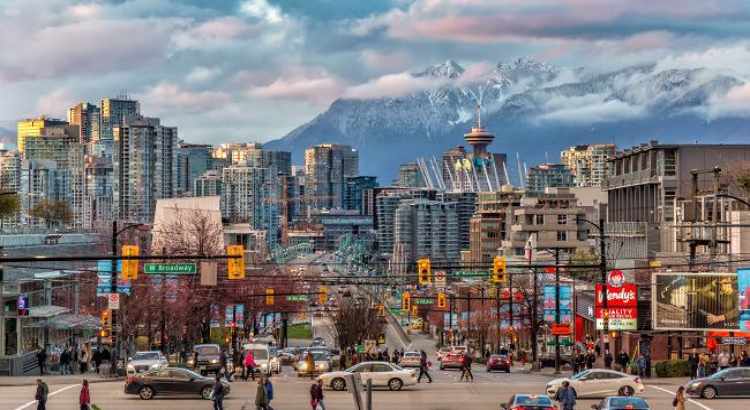A recent report has ranked the top 10 most dangerous cities in Canada based on the mid-2025 Numbeo Crime Index. The list highlights cities with high crime rates, including violent crimes, property crimes, and drug-related offences.

The Top 10 Most Dangerous Cities in Canada:

1. Surrey, British Columbia – Crime Index: 64.5
2. Kelowna, British Columbia – Crime Index: 62.3
3. Sudbury, Ontario – Crime Index: 62.3
4. Oshawa, Ontario – Crime Index: 60.5
5. Winnipeg, Manitoba – Crime Index: 60.4
6. Sault Ste. Marie, Ontario – Crime Index: 60.3
7. Hamilton, Ontario – Crime Index: 56.0
8. Brampton, Ontario – Crime Index: 55.5
9. Kamloops, British Columbia – Crime Index: 54.8
10. London, Ontario – Crime Index: 54.0

These cities face various challenges, including gang activity, substance abuse, economic disparities, and urban growth. Local authorities are working to address these issues through community policing, social programs, and crime prevention initiatives.

Residents and visitors can take steps to stay safe, such as securing their homes and vehicles, being cautious in high-risk areas, and following local crime updates.
Canada’s global reputation as a safe, welcoming nation with stunning landscapes holds strong, but certain cities face elevated crime challenges.
Using the mid-2025 Numbeo Crime Index, a trusted database of user-contributed crime perceptions, this article ranks the top 10 most dangerous cities in Canada.
With in-depth crime statistics, comparisons to other cities, actionable safety tips, and insights into local initiatives, this comprehensive guide empowers residents, travellers, and policymakers to navigate urban safety.
Whether planning a visit, relocation, or seeking to understand crime trends, this article is the ultimate resource.
Below is the mid-2025 Numbeo Crime Index ranking of Canada’s most dangerous cities, as provided.
Each entry includes crime data, contributing factors, local initiatives, and safety tips, offering a deeper analysis.
1. Surrey, British Columbia
Crime Index: 64.5
Safety Index: 35.5
North America Rank: 12
Key Stats: High concerns about drug-related crimes, break-ins, and gang violence (2025).
Surrey, a dynamic city in British Columbia’s Lower Mainland, leads with a Crime Index of 64.5, in the “high” category alongside Atlanta (64.6).
Residents report significant worries about drug trafficking, break-ins, and gang-related violence, placing Surrey among global crime hotspots like Houston (63.2).
Rapid population growth (over 600,000) and socioeconomic disparities drive its ranking.
Contributing Factors:
Gang Activity: Drug trafficking and organized crime fuel violent incidents.
Urban Growth: Population surges strain policing resources.
Economic Disparities: Income inequality increases property crimes.
Local Initiatives:
Surrey RCMP’s Gang Enforcement Team targets organized crime.
The Surrey Anti-Gang Family Empowerment (SAFE) program supports at-risk youth.
Expanded CCTV and community policing deter crime in areas like Whalley.
Safety Tips:
Secure homes and vehicles with alarms and locks.
Avoid high-risk areas like Whalley at night.
Use Surrey RCMP’s crime map for real-time updates
2. Kelowna, British Columbia
Crime Index: 62.3
Safety Index: 37.7
North America Rank: 14
Key Stats: High rates of theft, vandalism, and drug offences (2025).
Kelowna, a tourism magnet in the Okanagan Valley, ranks second with a Crime Index of 62.3, near San Francisco (60.9).
Residents cite theft, vandalism, and drug-related crimes as top concerns, amplified by the city’s vibrant nightlife and tourist influx.
The opioid crisis and urban growth exacerbate safety challenges.
Contributing Factors:
Tourism Surge: Visitors increase property crime opportunities.
Opioid Crisis: Drug-related offences drive crime rates.
Population Growth: Expansion strains law enforcement.
Local Initiatives:
Kelowna RCMP increases downtown patrols.
Addiction and mental health programs address drug issues.
Business partnerships enhance security with lighting and cameras.
Safety Tips:
Secure belongings in tourist areas like Pandosy Village.
Avoid isolated areas after dark.
Follow Kelowna RCMP alerts for crime updates.
3. Sudbury, Ontario
Crime Index: 62.3
Safety Index: 37.7
North America Rank: 15
Key Stats: High violent crime concerns, including assaults and homicides (2025).
Sudbury, a northern Ontario mining hub, ties Kelowna with a Crime Index of 62.3.
Residents report significant concerns about violent crimes like assaults, driven by substance abuse and economic hardship.
Sudbury’s challenges place it near cities like Oshawa (60.5).
Contributing Factors:
Economic Challenges: Unemployment fuels crime.
Substance Abuse: Drug and alcohol issues drive violence.
Social Inequality: Disadvantaged areas see higher crime.
Local Initiatives:
Greater Sudbury Police expand community outreach.
Mental health and detox programs target addiction.
Youth initiatives promote economic opportunity.
Safety Tips:
Be cautious in areas like the Donovan neighbourhood.
Report suspicious activity promptly.
Join community safety programs.
4. Oshawa, Ontario
Crime Index: 60.5
Safety Index: 39.5
North America Ranking: 17
Key Stats: High rates of theft and vandalism, often drug-related (2025).
Oshawa, known as Canada’s “automotive capital,” has a Crime Index of 60.5, ranking it near Winnipeg (60.4).
Property crimes like theft and vandalism, linked to drug use, are top resident concerns. Proximity to Toronto amplifies urban crime trends.
Contributing Factors:
Urban Proximity: Toronto’s crime spillover affects Oshawa.
Economic Pressures: Unemployment drives property crimes.
Drug Issues: Substance abuse fuels petty theft.
Local Initiatives:
Durham Regional Police enhance community policing.
The Durham Community Safety Plan supports vulnerable residents.
Economic revitalization reduces crime drivers.
Safety Tips:
Secure homes and vehicles against break-ins.
Stay vigilant in downtown Oshawa.
Monitor Durham Regional Police updates.
5. Winnipeg, Manitoba
Crime Index: 60.4
Safety Index: 39.6
North America Rank: 18
Key Stats: High concerns about muggings, robberies, and assaults (2025).
Winnipeg, Manitoba’s capital, has a Crime Index of 60.4, driven by violent crimes like muggings and assaults.
Gang activity and poverty amplify safety concerns, placing Winnipeg near Indianapolis (60.2) globally.
Contributing Factors:
Gang Activity: Organized crime drives violence.
Poverty: Socioeconomic disparities fuel crime.
Substance Abuse: Drug issues exacerbate incidents.
Local Initiatives:
Winnipeg Police’s Gang Response Plan targets organized crime.
Indigenous-led Bear Clan Patrol promotes community safety.
Poverty reduction programs address root causes.
Safety Tips:
Avoid high-risk areas like the North End at night.
Use Winnipeg Police crime maps for updates.
Support community safety patrols.
6. Sault Ste. Marie, Ontario
Crime Index: 60.3
Safety Index: 39.7
North America Rank: 19
Key Stats: High rates of drug-related offences and property theft (2025).
Sault Ste. Marie, a border city, has a Crime Index of 60.3. Drug-related crimes and property theft dominate resident concerns, with economic challenges and cross-border trafficking contributing to safety issues.
Contributing Factors:
Economic Struggles: Unemployment drives property crimes.
Border Proximity: Trafficking routes increase crime.
Resource Constraints: Limited policing hampers prevention.
Local Initiatives:
Sault Ste. Marie Police increase community patrols.
Joint RCMP-OPP efforts target smuggling.
Economic programs reduce crime drivers.
Safety Tips:
Secure property to deter theft.
Be cautious in downtown areas at night.
Follow police advisories.
7. Hamilton, Ontario
Crime Index: 56.0
Safety Index: 44.0
North America Rank: 25
Key Stats: Rising concerns about break-ins and auto theft (2025).
Hamilton, in Ontario’s Golden Horseshoe, has a Crime Index of 56.0, near Las Vegas (55.9).
Break-and-enter cases and auto theft, alongside organized crime, are top concerns.
Dense downtown areas increase crime opportunities.
Contributing Factors:
Organized Crime: Mafia and gang activity drive violence.
Economic Instability: Unemployment fuels property crimes.
Urban Density: High population increases risks.
Local Initiatives:
Hamilton Police expand CCTV and community policing.
Economic programs target unemployment.
Youth outreach prevents crime.
Safety Tips:
Secure valuables in public spaces.
Stay vigilant in downtown Hamilton.
Engage with local safety programs.
8. Brampton, Ontario
Crime Index: 55.5
Safety Index: 44.5
North America Rank: 28
Key Stats: Rising carjackings and home invasions (2025).
Brampton, a fast-growing city in Peel Region, has a Crime Index of 55.5.
Carjackings and home invasions, driven by youth gangs and urban sprawl, are growing concerns, ranking Brampton near Tucson (54.8).
Contributing Factors:
Urban Growth: Expansion strains policing.
Youth Gangs: Recruitment fuels violence.
Population Density: High density increases crime.
Local Initiatives:
Peel Police’s SafeGrowth program improves lighting and youth engagement.
Community policing builds trust.
Social programs target at-risk youth.
Safety Tips:
Secure vehicles and homes.
Be cautious in developing areas.
Follow Peel Police updates.
9. Kamloops, British Columbia
Crime Index: 54.8
Safety Index: 45.2
North America Rank: 30
Key Stats: High drug-related and property crime concerns (2025).
Kamloops, in British Columbia’s interior, has a Crime Index of 54.8.
Drug-related crimes and property theft, linked to opioid use and homelessness, drive resident concerns, placing Kamloops near Seattle (54.2).
Contributing Factors:
Substance Abuse: Drug issues fuel crime.
Economic Challenges: Limited resources exacerbate risks.
Tourism: Visitors increase property crimes.
Local Initiatives:
Kamloops RCMP enhances patrols.
Mental health and addiction programs expand.
Community initiatives promote safety.
Safety Tips:
Avoid drug-heavy areas.
Secure belongings in tourist zones.
Monitor Kamloops RCMP alerts.
10. London, Ontario
Crime Index: 54.0
Safety Index: 46.0
Global Rank: 32
Key Stats: High property crime and arson concerns (2025).
London, a cultural hub, has a Crime Index of 54.0. Property crimes and arson, driven by drug issues and economic disparities, are key concerns, particularly in student areas near Western University.
Contributing Factors:
Drug Issues: Substance abuse drives crime.
Economic Disparities: Socioeconomic gaps fuel theft.
Urban Growth: Population strains resources.
Local Initiatives:
London Police boost community engagement.
Social services target addiction.
Safety programs raise awareness.
Safety Tips:
Secure homes and vehicles.
Stay cautious in student areas at night.
Engage with local safety initiatives.
![]()












Leave a Reply